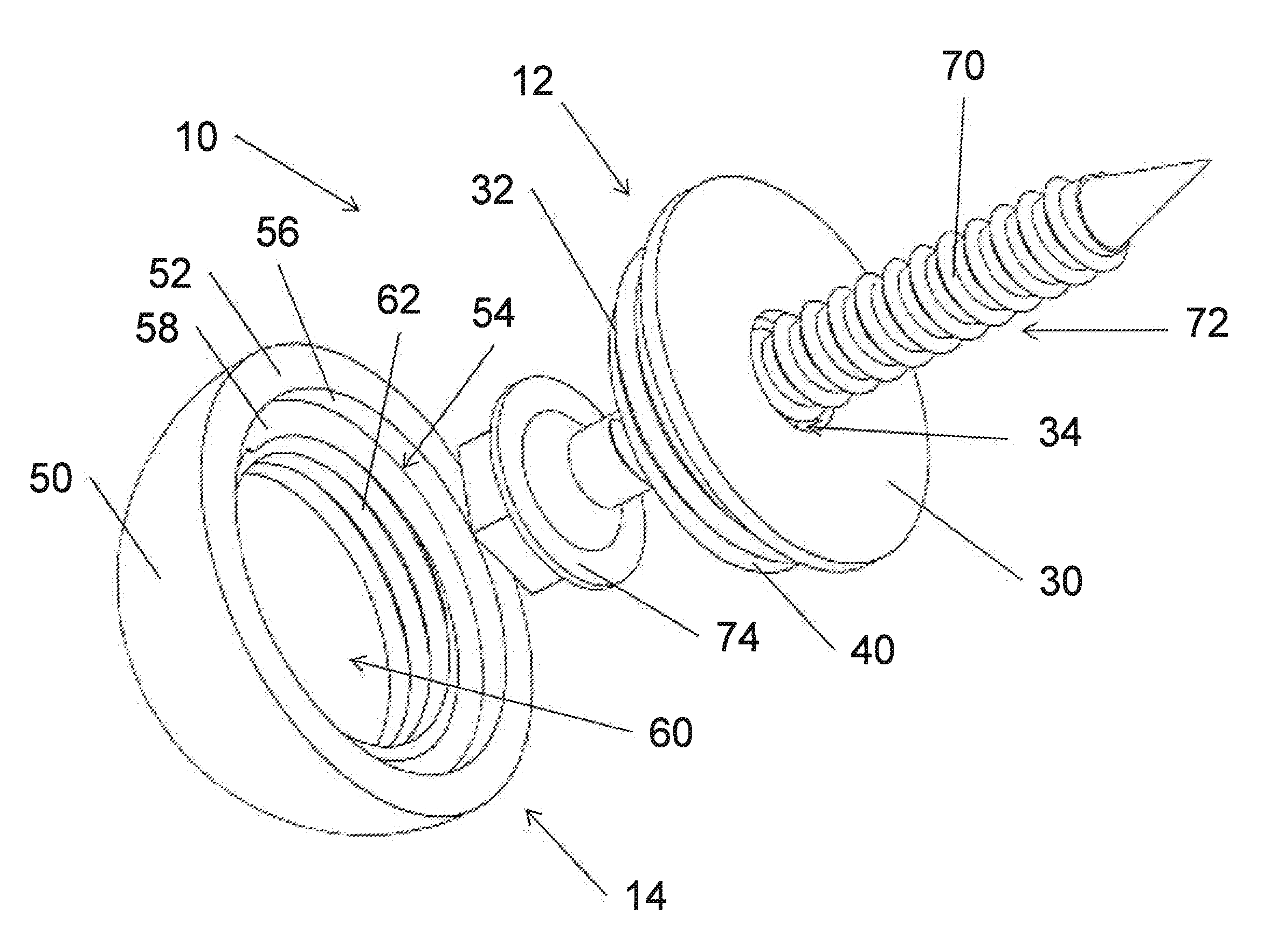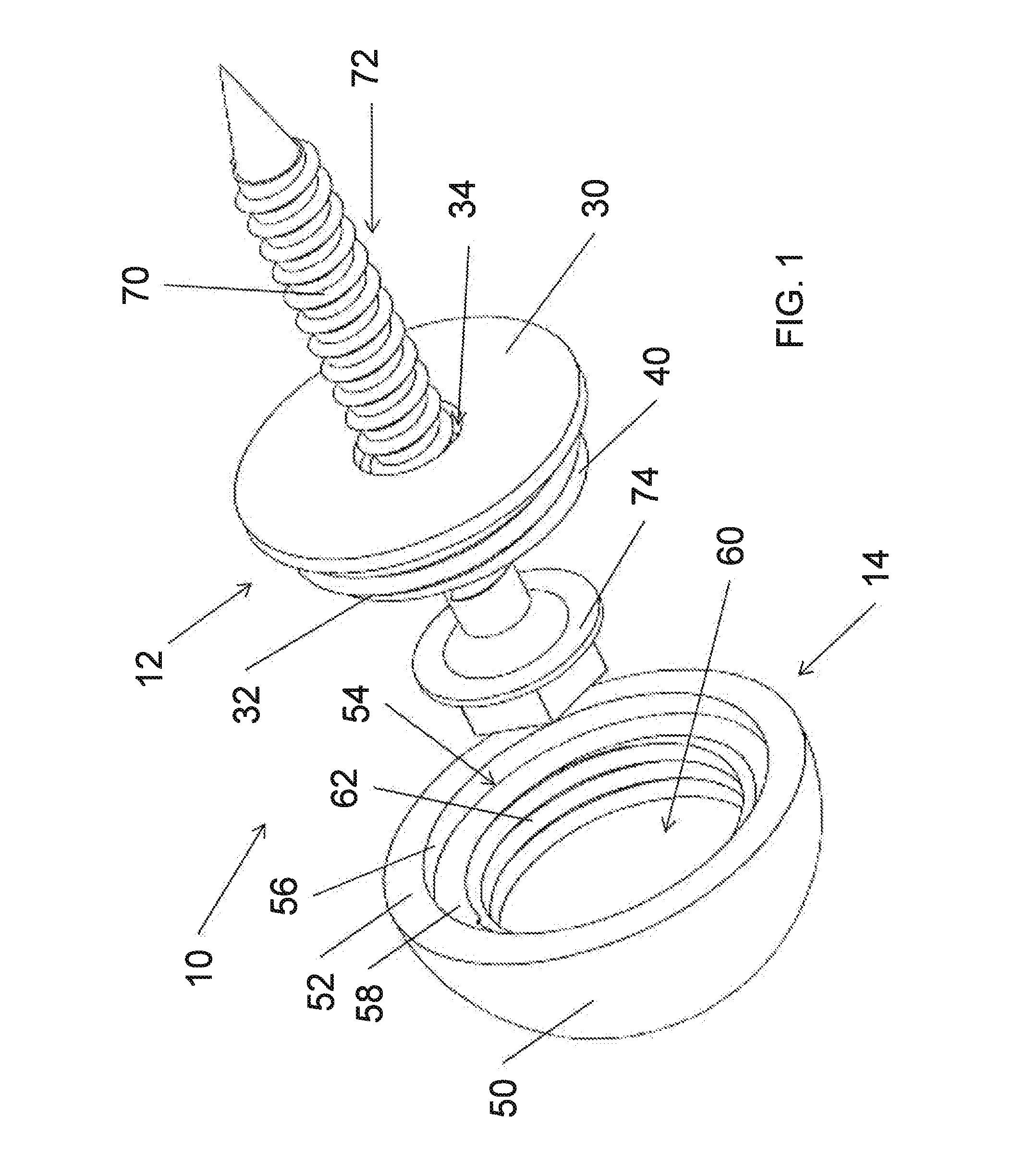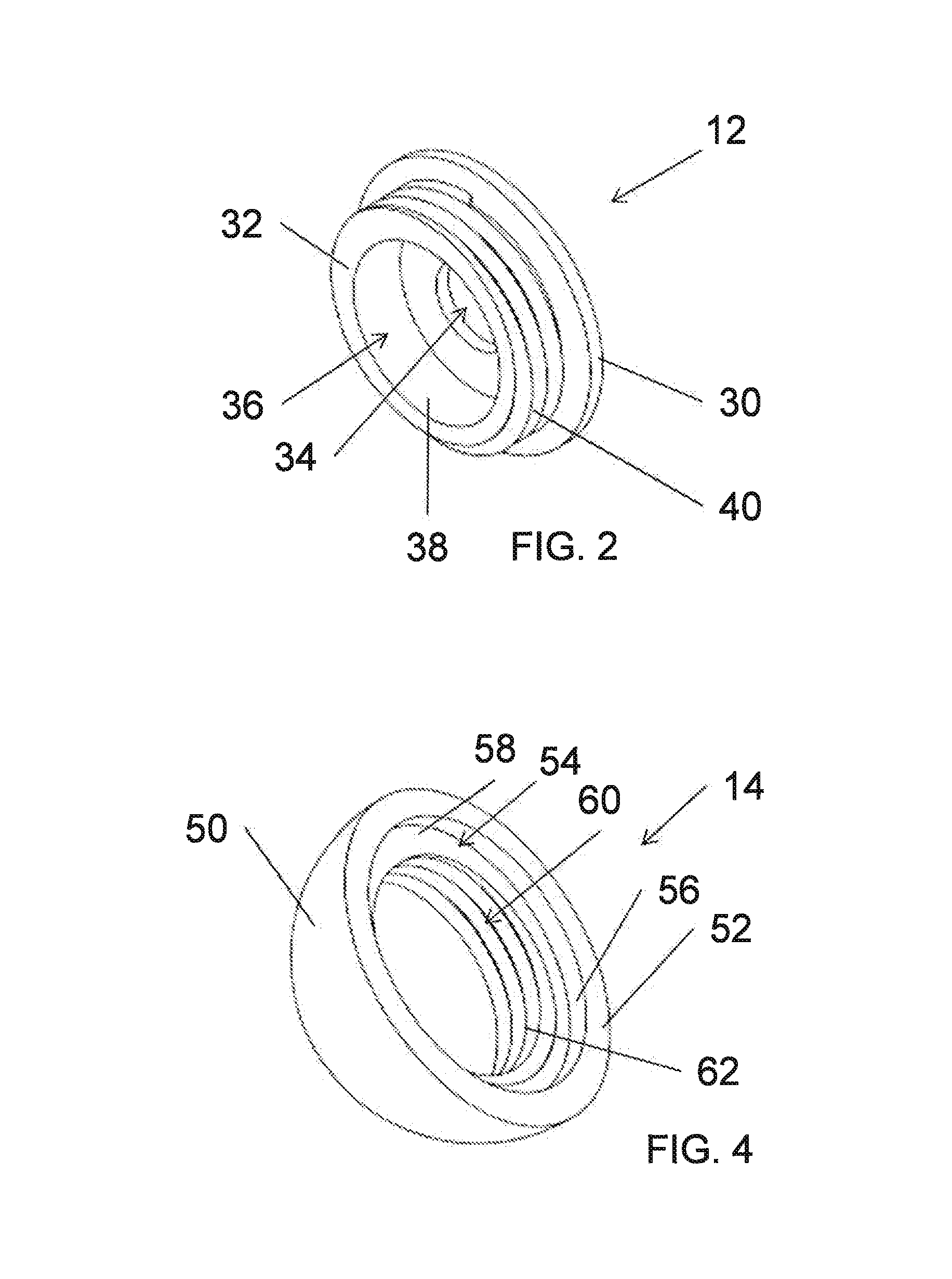Mounting hardware
- Summary
- Abstract
- Description
- Claims
- Application Information
AI Technical Summary
Problems solved by technology
Method used
Image
Examples
Example
DETAILED DESCRIPTION OF THE DRAWINGS
[0025]Reference is now made to FIG. 1 which illustrates an exploded perspective view of a rivet, nail or pin connector 10. The connector 10 comprises a base portion 12 and a cap portion 14. An outer surface of the base portion 12 is threaded. An inner surface of the cap portion 14 is correspondingly threaded. Thus, the cap portion 14 may be attached to the base portion 12 through the threaded interconnection. In this configuration, the base portion 12 comprises a male body member of the assembly and the cap portion 14 comprises a female body member.
[0026]Reference is now additionally made to FIG. 2 which illustrates a perspective view of the base portion 12 and FIG. 3 which illustrates a cross-sectional view of the base portion 12. The base portion 12 comprises a disc-shaped base plate 30. A cylindrical member 32 is mounted to the base plate 30. The cylindrical member 32 is preferably centered on the base plate 30. The base plate 30 includes an op...
PUM
 Login to View More
Login to View More Abstract
Description
Claims
Application Information
 Login to View More
Login to View More - R&D
- Intellectual Property
- Life Sciences
- Materials
- Tech Scout
- Unparalleled Data Quality
- Higher Quality Content
- 60% Fewer Hallucinations
Browse by: Latest US Patents, China's latest patents, Technical Efficacy Thesaurus, Application Domain, Technology Topic, Popular Technical Reports.
© 2025 PatSnap. All rights reserved.Legal|Privacy policy|Modern Slavery Act Transparency Statement|Sitemap|About US| Contact US: help@patsnap.com



